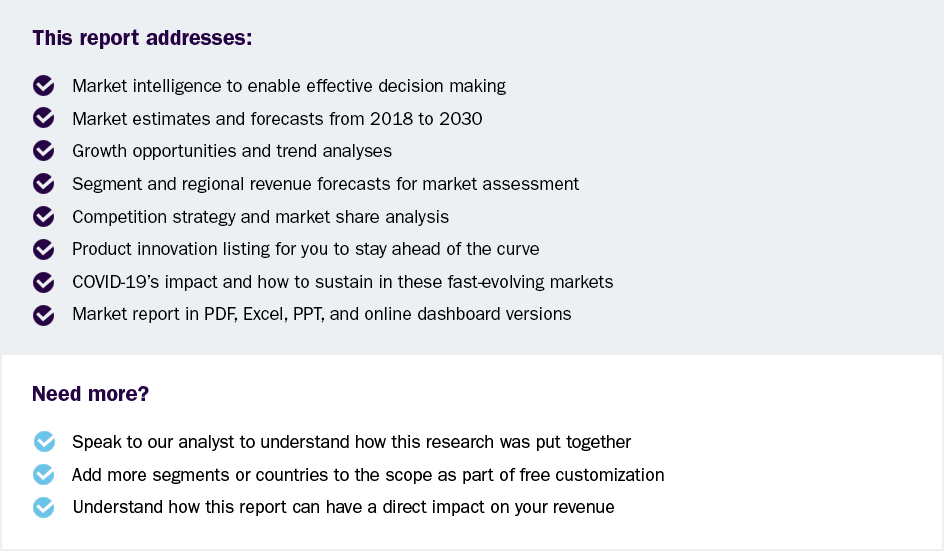Nanosatellite & Microsatellite Market To Reach $13,951.5 Million By 2030
Nanosatellite And Microsatellite Market Growth & Trends
The global nanosatellite and microsatellite market size is estimated to reach USD 13,951.5 million by 2030, registering to grow at a CAGR of 22.8% from 2025 to 2030 according to a new report by Grand View Research, Inc. The upsurge in Earth observation missions and the development of Small Satellite Launch Vehicles (SSLVs) are expected to propel the growth of the market. For instance, in February 2022, EOS-04, an Earth observation satellite, was launched into a sun-synchronous polar orbit by India's Polar Satellite Launch Vehicle PSLV-C52. The satellite weighs 1,710 kg and provides high-quality photographs.
The emerging role of small satellites in the telecom sector has enabled telecom providers to accelerate 5G deployment globally, in addition to creating market opportunities for the satellite communication (Satcom) industry stakeholders. Developing small satellites for 5G deployment can particularly benefit in the form of wide-area coverage, cost-effectiveness, and reliability. Latest technologies such as new solar panel cell technology and star tracker technology are allowing providers of small satellites to strengthen their position in the broader satellite industry.
For instance, in January 2022, Sateliot, a nanosatellite and telecommunications operator based in Spain, signed a Memorandum of Understanding (MoU) with the European Space Agency, an intergovernmental organization of 22 member countries devoted to space exploration, to assess, develop, and enforce innovative products, technologies, and services with space capability using 5G. The company intends to invest approximately 100 million Euros in launching a fleet of 20 nanosatellites for 5G network design, mixed terrestrial space networks, spectrum exchange, and spectrum management.
The growth of the communications sector and the continued adoption of Internet of Things (IoT) are expected to create growth opportunities in the market. The continued adoption of IoT would particularly encourage start-ups to launch their small satellites. For instance, Hiber launched its first nanosatellite in 2019 to deliver internet connectivity to remote locations using a Hiberband modem and support potential IoT projects globally. In November 2021, Fleet Space Technologies Pty Ltd acquired USD 26 million in Series B funding to accelerate the development of its nanosatellite internet of things connectivity fleet.
The IoT nanosatellite fleet facilitates two-way communications in rural locations with inadequate mobile phone and broadband connectivity. Government support is the key factor encouraging companies to launch nanosatellites and microsatellites for communication and navigation, Earth observation, and remote sensing applications. However, frequent delays in satellite launches are leading to skepticism. Nevertheless, independent launch vehicles are being developed and low-cost sensors are being manufactured by the key companies, which is expected to help overcome the growth barriers.
 Request a free sample copy or view report summary: Nanosatellite And Microsatellite Market Report
Request a free sample copy or view report summary: Nanosatellite And Microsatellite Market Report
Nanosatellite And Microsatellite Market Report Highlights
-
Based on mass, the nanosatellite segment led the market with the largest revenue share of 78.72% in 2024, owing to its growing deployment for various applications, particularly in Earth observation and communication.
-
Based on application, the earth observation/remote sensing segment led the market with the largest revenue share of 46.96% in 2024, primarily owing to the increasing demand for high-resolution imaging and data collection capabilities offered by nanosatellites and microsatellites.
-
Based on end use, the commercial segment led the market with the largest revenue share of 46.26% in 2024, driven by the increasing utilization of nanosatellites and microsatellites for various commercial applications, including telecommunications, navigation, and broadcasting.
-
North America dominated the nanosatellite and microsatellite market with the largest revenue share of 43.7% in 2024.
Nanosatellite And Microsatellite Market Segmentation
Grand View Research has segmented the global nanosatellite and microsatellite market based on mass, application, end-use, and region:
Nanosatellite And Microsatellite Mass Outlook (Revenue, USD Million, 2018 - 2030)
-
Microsatellite
-
Nanosatellite
Nanosatellite And Microsatellite Application Outlook (Revenue, USD Million, 2018 - 2030)
-
Communication & Navigation
-
Earth Observation/Remote Sensing
-
Scientific Research
-
Technology and Academic Training
Nanosatellite And Microsatellite End-use Outlook (Revenue, USD Million, 2018 - 2030)
-
Government
-
Defense and Security
-
Commercial
-
Civil
Nanosatellite And Microsatellite Regional Outlook (Revenue, USD Million, 2018 - 2030)
-
North America
-
U.S.
-
Canada
-
Mexico
-
-
Europe
-
UK
-
Germany
-
France
-
-
Asia Pacific
-
China
-
India
-
Japan
-
South Korea
-
Australia
-
-
Latin America
-
Brazil
-
-
Middle East & Africa
-
South Africa
-
Saudi Arabia
-
UAE
-
List of Key Players in Nanosatellite And Microsatellite Market
-
Dauria Aerospace
-
GomSpace
-
Innovative Solutions in Space (ISIS)
-
Sierra Nevada Corporation (SNC)
-
Spire Global, Inc.
-
SpaceQuest Ltd.
-
Surrey Satellite Technology Limited (SSTL)
-
The Boeing Company
-
Tyvak Inc.
-
Vector Launch, Inc

